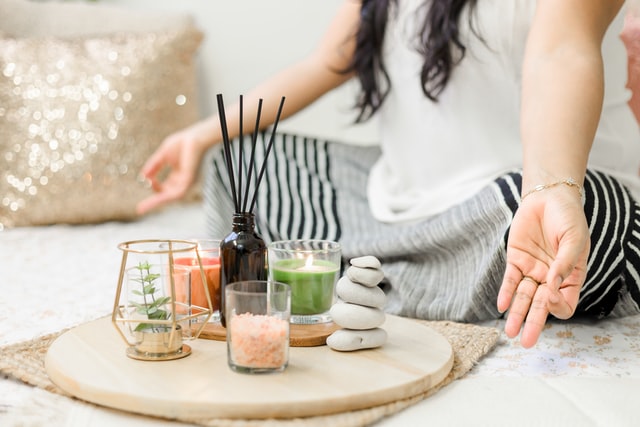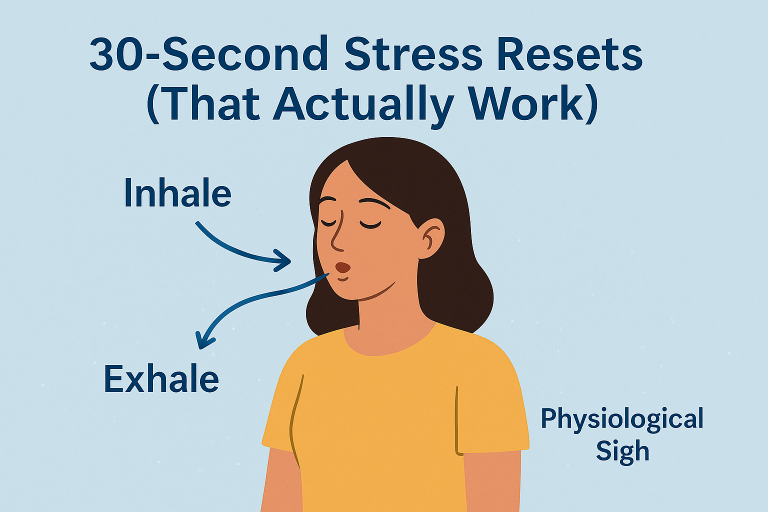Stress is a natural part of life, but it’s also got the potential to make our lives miserable. These days, the stress that we feel can be so overwhelming. It’s difficult to find time to yourself when there is work and life constantly demanding our attention.
Before you start the day, take 10 minutes to relax and let your body know that everything is going to be okay.
You can avoid stress and live a happier life by following these simple tips.
What are the benefits of relaxation techniques?
The health benefits of relaxation are often missed by those who prioritize other tasks. Practicing relaxation techniques can have many benefits, including slowing heart rate, lowering blood pressure, reducing the activity of stress hormones.
Relaxation is not just for the physical body; it can also be beneficial to increase focus and reduce stress.
Besides, there are many positive coping methods other than relaxation techniques. When you’re stressed, your body releases hormones that raise your blood pressure and heart rate. If this happens on a regular basis over time it can lead to health problems such as high blood pressure or anxiety/depression amongst others.
Types of Relaxation Techniques
There are many types of relaxation techniques, including deep breathing, meditation, positive visualization, and yoga. These techniques can help reduce anxiety and stress in our daily lives as well as give us a better quality of life.
Autogenics is a relaxation technique that uses both visual imagery and body awareness to reduce stress.
Progressive muscle relaxation (PMR) involves tensing muscles, then relaxing them in order to achieve deep states of calmness.
Awareness of physical sensations can help people focus on what’s happening inside their bodies during the process of progressive muscle relaxation.
How to practice a technique
Learning relaxation techniques, such as meditation and deep breathing, is a way to reduce stress. These skills can also improve with practice. Patience is key when learning new skills or trying out new techniques, so if you don’t see any results after a few times, try another technique.
In order to practice a technique, it is important that you first make sure that the process doesn’t cause any physical discomfort. It’s also helpful if you talk with your doctor about other options for stress reduction or emotional distress.
Short-term stress relief strategies
Stress is a common part of modern life and can have negative effects on our physical and mental health. It is important to take short-term stress relief strategies in order to reduce the impact that it has on your quality of life.
The best strategies for short-term stress relief include exercising, meditating, and having a healthy diet.
These habits can be performed anywhere and take little time to master. They are free, provide immediate relief from stress, prevent longer-term consequences such as physically damaging yourself, and can be used as a tool to help you achieve your goals.
Guided imagery
Guided imagery is a type of visualization that changes your focus to an event or time when you were really relaxed. The idea is to use the power of your mind and imagine yourself in a different scenario, such as being at the beach on vacation.
Guided imagery is a technique that can be used in stressful situations as well as for purposes of relaxation. Some guided imagery recordings are done by voice, and some walk you through a peaceful scene with hand motions.
People typically close their eyes and return to the present moment after a few minutes of guided imagery, which is different from a meditation where one continues to focus on more than one point in time.
Meditation
Meditation can help you to reduce stress in the short term. Meditation has been practiced for thousands of years and there are different styles of meditation that focus on different aspects, such as mindfulness or concentration.
Meditation is a practice that includes focusing attention through the body. There are many different types of meditation, some of which include focused attention and quieting your mind while others involve physical movements like walking or standing.
Mindfulness meditation is a practice that has the goal of reducing stress, anxiety, and depression. Mindful practices can be repetitive or follow an internal thought sequence before releasing it to stay in the present moment.
There are many ways to apply mindfulness to your daily activities such as walking, exercising, and eating. Practicing mindfulness will help you improve your focus on what’s happening right now while also improving self-awareness which leads to better decision-making skills overall
During practice, it’s important to have an open attitude and relaxed breathing patterns in order not to disrupt concentration.
Progressive muscle relaxation
Progressive muscle relaxation is a technique that focuses on gradually tensing and relaxing different muscle groups, while simultaneously focusing on breathing exercises. It can be practiced along with guided imagery and other techniques to help reduce stress in the short term.
This technique is proven to successfully instill calm and relieve stress.
Take a walk
Walking is a simple but effective way to relax your mind and body. There are many benefits to taking a walk. It can help you clear your mind and reduce anxiety, stress, depression, anger, or hostility.
In addition to lowering the risk of health problems such as diabetes and heart disease that have been linked with chronic stress levels in adults over 45 years old who don’t exercise regularly.
Long-term stress relief strategies
It’s important to create a lifestyle that will help you ward off stress and deal with challenges in a healthy way. Habits like exercising or meditating regularly can make dealing with stressful situations easier.
Stress reduction tools such as aromatherapy, breathing exercises, yoga, and meditation have been medically reviewed by experts to provide immediate relief when feeling overwhelmed, for example by your child’s behavior at the playground.
However, there are some long-term strategies for managing stress that can be helpful. Some people may benefit from meditation or exercise while others might want to spend time with friends or family members with who they feel comfortable opening up.
These tips should help you calm your mind and body by reducing the number of daily stressors, which will ultimately lead to a better quality of life overall.
Eat a balanced diet
In order to stay healthy and happy, it is important that you eat a balanced diet. Eating too much of one food can cause long-term stress or anxiety in the body. A balanced diet is important for maintaining mood regulation and energy balance.
In order to maintain a balanced diet, avoid high-fat, high-sugar foods and refined carbs like cookies and potato chips. Instead focus on eating eggs, avocado, walnuts for support of mood regulation and energy balance.
Make time for leisure activities
Leisure activities are a great way to relieve stress. Here are some tips on how to make time for leisure activities:
- Do something you enjoy and find soothing.
- Make sure it’s something that doesn’t require too much energy or effort, like reading or watching a movie with friends and family.
Develop positive self-talk habit
People can develop a positive self-talk habit that will help them to reduce stress. It’s important to learn how to talk to yourself in a more realistic, compassionate manner.
it is extremely beneficial for those with a negative outlook, and it can help you develop a healthier mindset and maintain an optimistic attitude.
Express Gratitude
Expressing gratitude is a long-term stress-relief strategy. It can help you to be more mindful of all the good things that you have in life, and this will lead to an increased quality of life.
This practice has been shown to improve mental health, reduce the stresses of life, and enhance the quality of life.
Express gratitude regularly to help you remember the good things in life. The idea of a gratitude journal is something that can be done daily, helping make this habit easier and more effective.
Prioritize Exercise
Exercise is a very important part of our lives, but what exactly does that mean? In general terms, exercise is any physical activity done in order to improve one’s health. From fitness to weight loss, there are many different forms of exercise.
Exercise is key to managing stress and improving mental health. Exercise can be done in many different ways, such as walking, running, or dancing.
Finding the best relaxation technique
Finding the best relaxation technique can be a difficult task, but it’s worth the effort. You should try deep breathing and meditation first.
Next, you’ll want to practice rhythmic exercises such as exercises in yoga or tai chi. Yoga is an option because it incorporates physical movements that allow for multiple levels of stretching and flexibility in your body.
Finally, instead of zoning out at the end of a stressful day with TV watching, try practicing some other form of relaxation techniques before going to bed.
The natural relaxation response is a state of deep rest that puts the brakes on stress and brings your body and mind back into balance.
There are many different techniques to relieve anxiety or other symptoms, but it can take some trial and error before finding one that works best for you.
To find the best relaxation technique, it is important to identify what type of lifestyle you have and its current state. With this in mind, a variety of techniques are available for stress relief that can be practiced each day or weekly.




